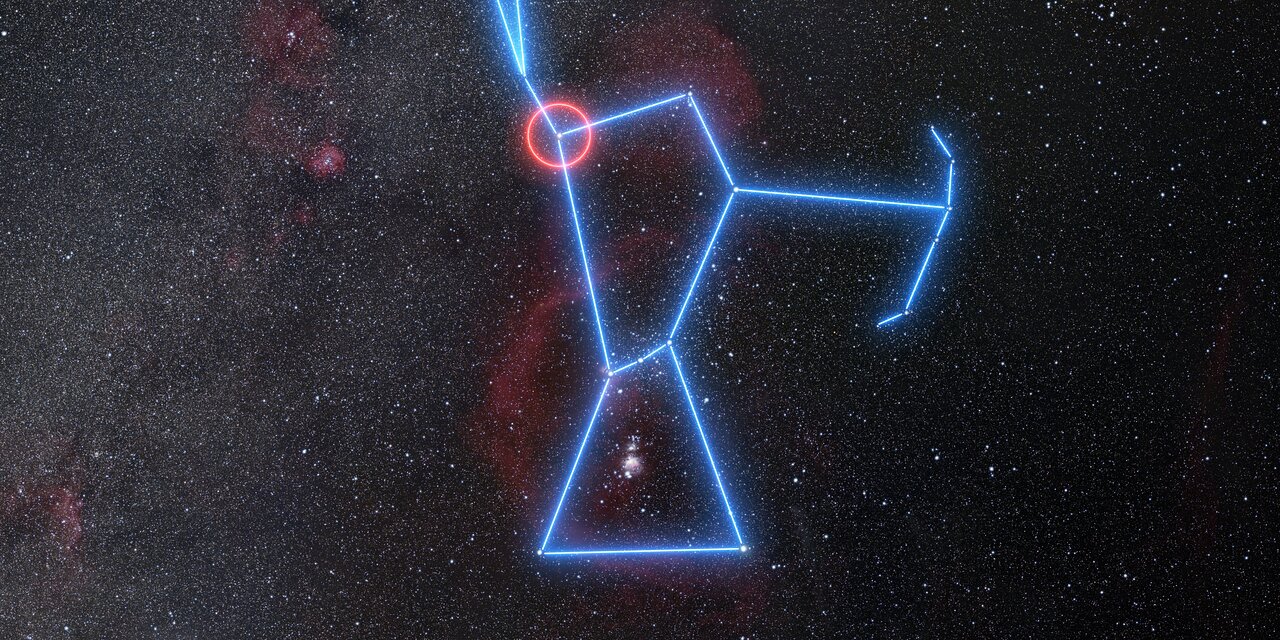News release
From:
The ‘Great Dimming’ of the red supergiant star Betelgeuse resulted from the formation of a dust clump and a cool spot in its southern hemisphere, reports a study published in Nature this week. These observations shed light on the mechanisms responsible for the significant mass-loss events that occur during the most common final stage of a massive star’s evolution.
Between November 2019 and March 2020, a historic dimming of the visible brightness of Betelgeuse — the second-closest red supergiant to Earth — was observed globally, sparking widespread speculation as to its cause. At the time, some reports suggested that this ‘Great Dimming’ was a sign that the star was about to explode as a supernova, although no explosion was subsequently observed.
Miguel Montarges and colleagues studied the surface of Betelgeuse both before and during the ‘Great Dimming’. High-angular-resolution observations from the Very Large Telescope in Chile reveal that Betelgeuse’s southern hemisphere was ten times darker than usual during the dimming, with the shape and intensity of this darkness rapidly evolving over the three-month monitoring period. Observations and modelling reveal that a local temperature drop occurred in a cool region emerging on Betelgeuse’s visible surface, discounting the theory that the event indicated Betelgeuse’s forthcoming explosion as a supernova. Notably, the authors conclude that such diverse and rapidly-evolving local surface behaviour is linked to a distinct, non-uniform mass-loss event — the first such event to be observed from a red supergiant star in real-time.
This study provides novel insight not only into the processes behind red supergiant dimming, but also the structure and evolution of stars.



 International
International


